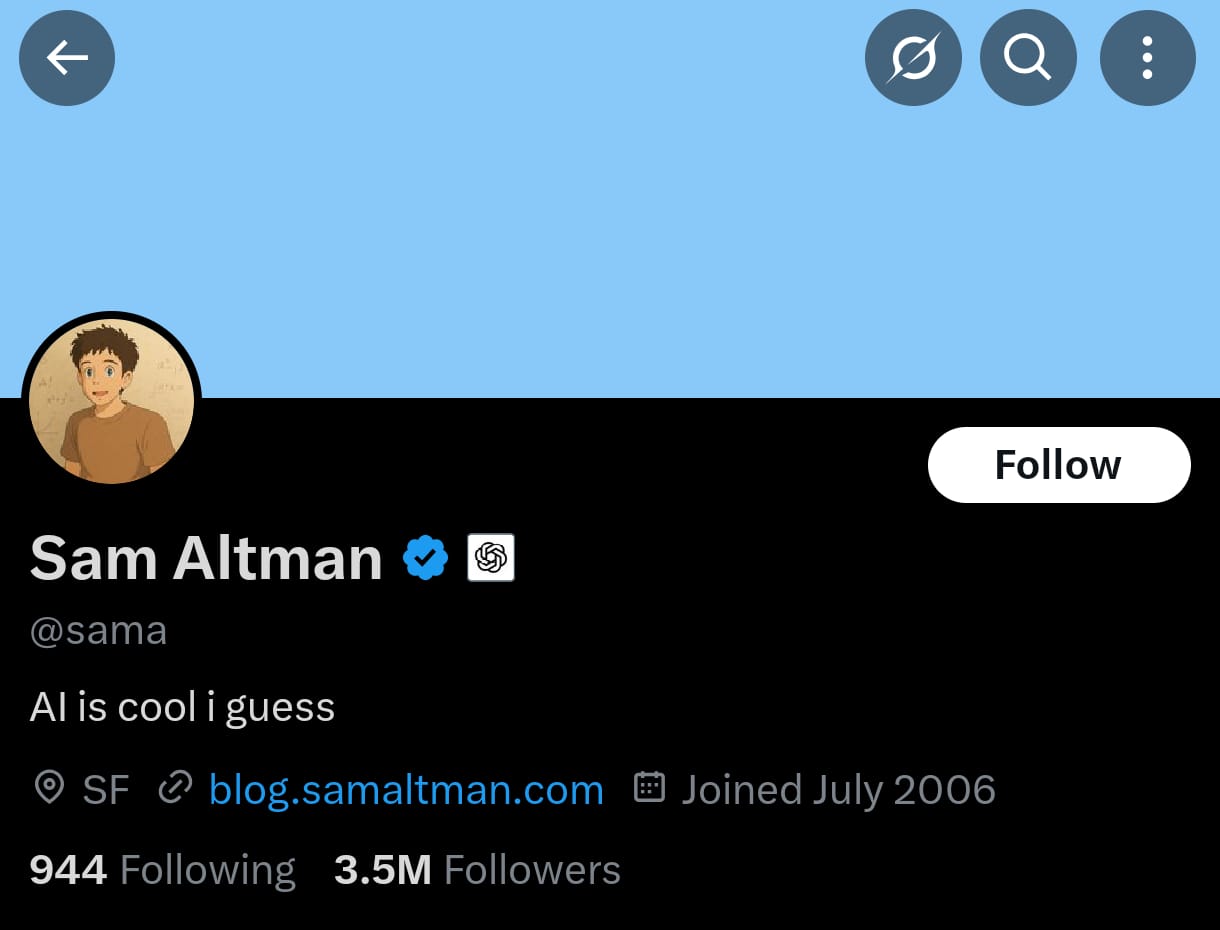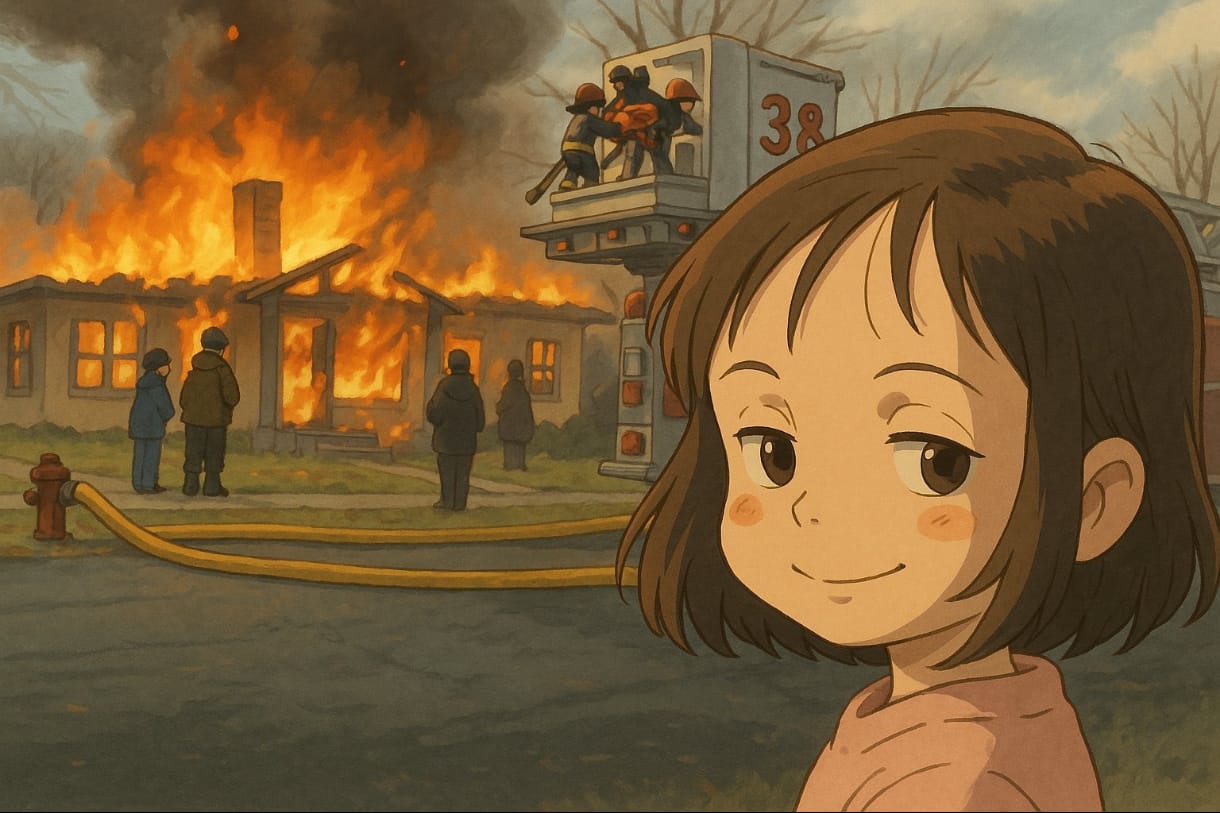- The latest version of Open AI’s image generation technology has resulted in a flood of users sharing images on social media that have been transformed in the style of Studio Ghibli’s the legendary Japanese animation studio.
- Unrealistic in a Disconnected Way, AI generated images often feel unrealistic in a way that disrupts immersion. Instead of harnessing the charm of Ghibli’s world, they reveal AI’s struggle with artistic nuance, emotional depth, and cohesive storytelling.
- AI’s Struggle With True Artistic Essence, It can replicate aesthetic elements but often misses the emotional and narrative depth that makes the original works truly magical.
The Appeal of Aesthetics
Sam Altman, the Founder of OpenAi and Co-founder of World, has changed his X’s profile picture with the Ghibli styled AI generated Art.

OpenAI’s efforts to reproduce the look of Studio Ghibli are aesthetic masterstrokes. The watercolor hues, brushy textures, and enchanted air most assuredly produce images that appear to be the real deal. On their own, you might almost be tricked into thinking they were inhouse concept drawings. But, on closer examination, the flaws start to appear.
The Fun and The Flaws
Character Designs that Lack Soul, Ghibli characters are not only beautifully drawn, they execute personality. AI produced images, on the other hand, tend to have characters with empty faces, unnatural poses, or worse proportioned faces that look just a little off.
Backgrounds That Don’t Tell a Story, A defining trait of Studio Ghibli’s work is how every scene tells a story through its environment. However, often churn out beautiful yet sterile backgrounds. AI struggles to inject that same layered storytelling.
Most images generated by AI don’t do simple physics right. Floating bodies, clothing not quite hanging where it should, objects suspended mid air such mistakes shatter the illusion. The magic in Ghibli seems real because it operates in a consistent logic, AI images generally don’t.
Why is it so important?
While it’s easy to dismiss these flaws as mere quirks of an evolving technology, they actually highlight a fundamental gap between AI and human artistry. Ghibli’s art is not just about aesthetics it’s about emotion, memory, and cultural storytelling. AI, for all its advances, still struggles to understand what makes art meaningful beyond surface level replication.
Supports and Concerns
After the Open AI’s Ghibli styled generated images shared all over the internet and social media, many celebrities have shared and gave support on the images. However on the another side real artists, designers and the persons who chose the art as a profession giving their disapproving perspectives on the OpenAi Ghibli. They fear that this might be the end of the real art and the artistic profession.
As an artist myself, I can understand that these AI generated arts are taking over the realistic art essence that only an human can show. This might be the easiest way to create art with a prompt or existing images, but, it has their own flaw that it will reach a saturation point where everyone in the world can make any kind of art.
Hayao Miyazaki, the co-founder of Studio Ghibli, has previously expressed strong disapproval on Ai generates animations. In a 2016 meeting where he was shown an AI animation demo, Miyazaki said, “I am utterly disgusted. If you really want to make creepy stuff you can go ahead and do it. I would never wish to incorporate this technology into my work at all.” He also said, “I strongly feel that this is an insult to life itself.”
Some Interesting Posts Shared in X
Many Companies and Celebrities have shared their interesting Ghibli images. Particularly, Major Crypto companies have shared their interest in X’s Posts. Here are some interesting posts.
Also Read : Sridhar Vembu concerns, IT’s coding will be 90% AI



